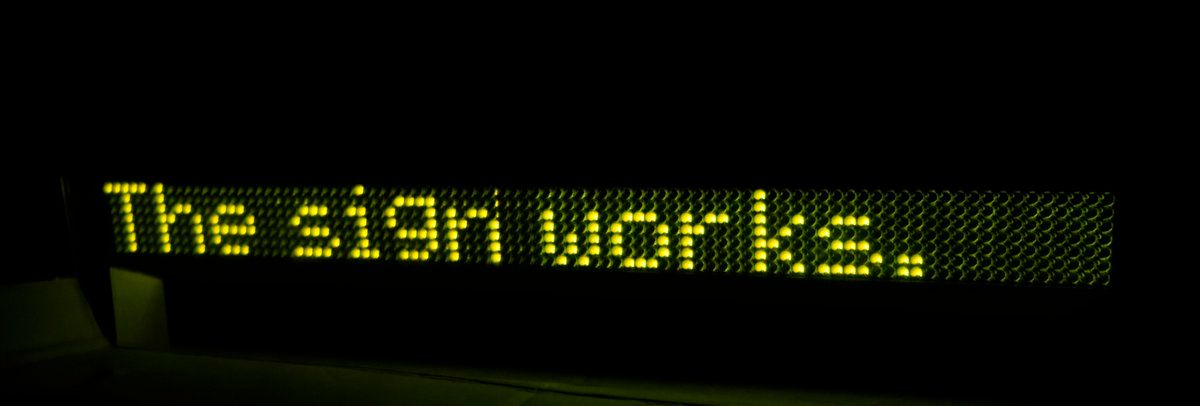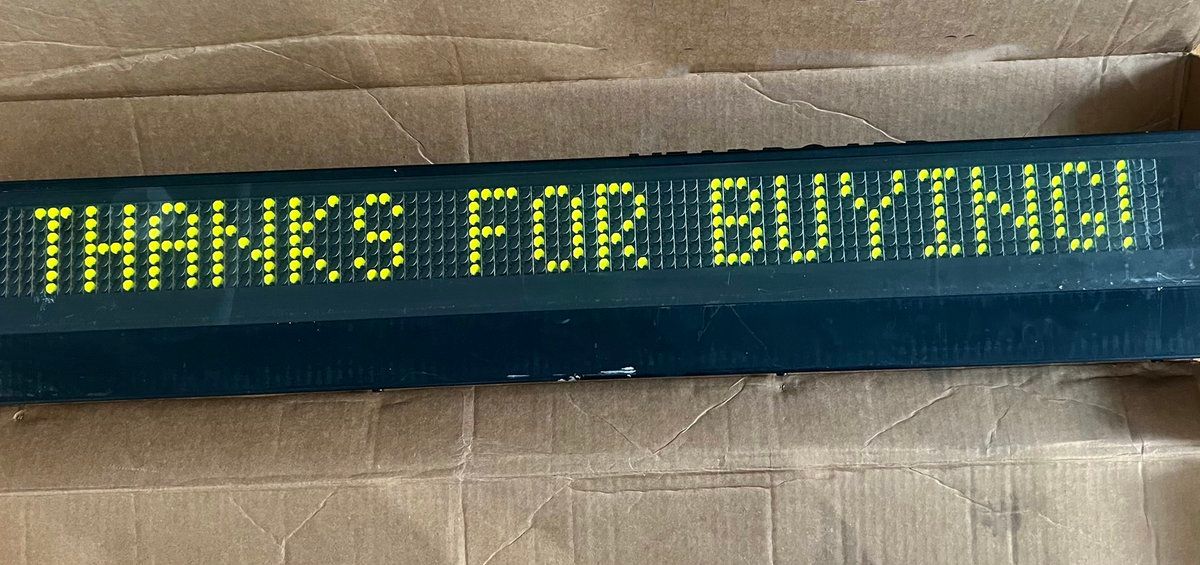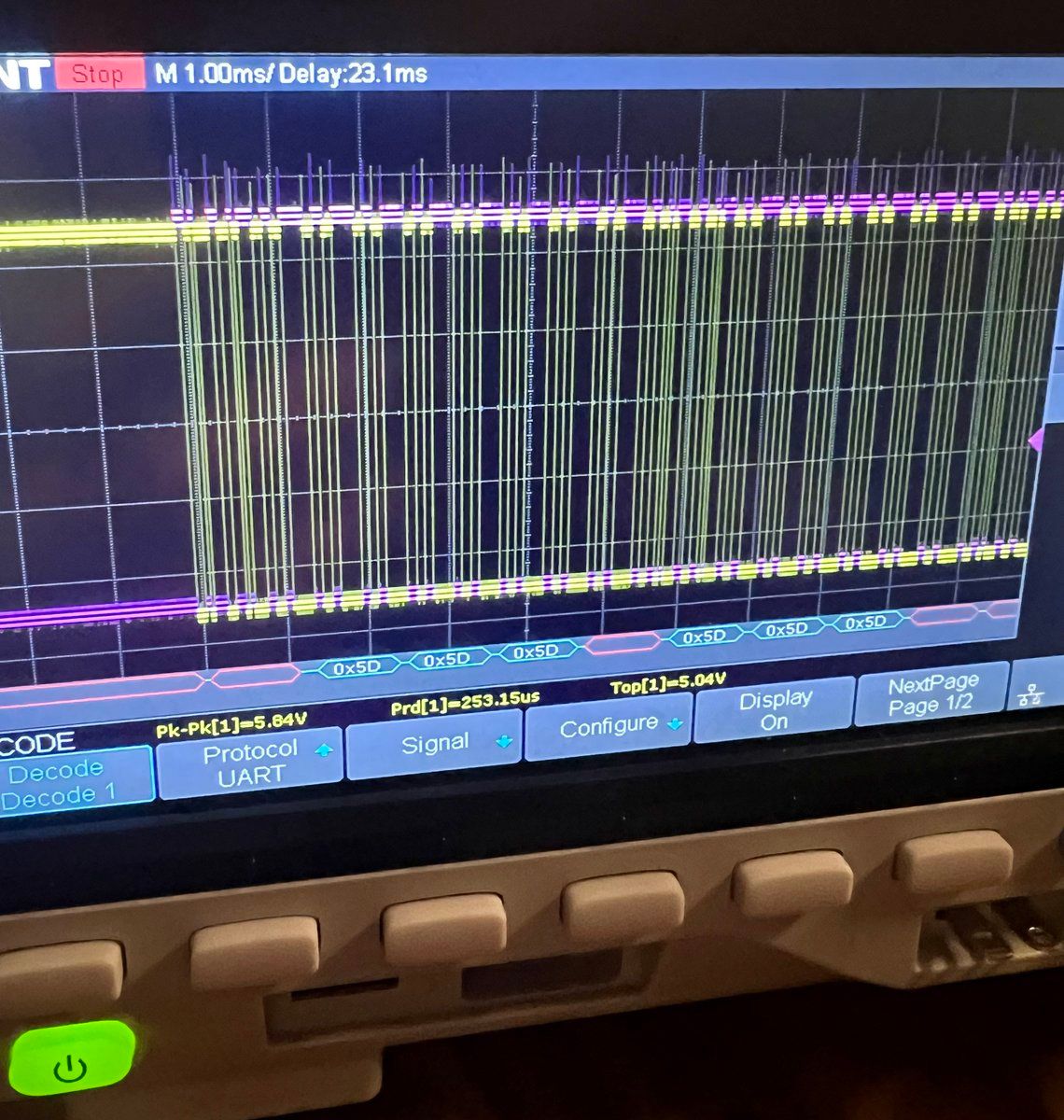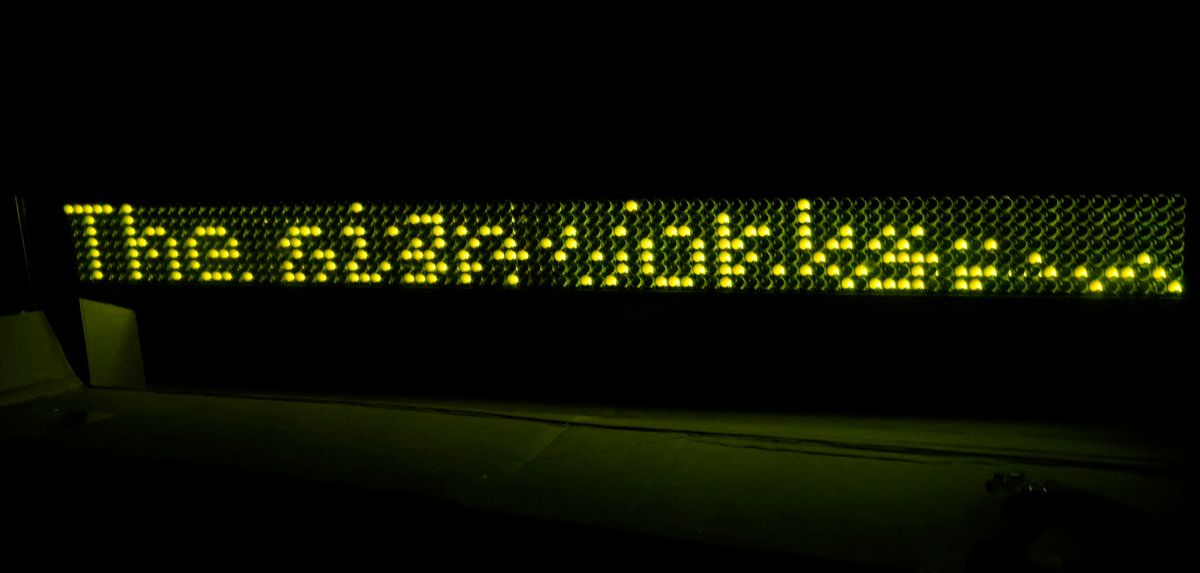flip-dots in 2023

Integrated a custom controller into a sign from '99. This old flip dot sign has a nice tactile feel to it but is modern and sleek enough to work in my space. It almost can connect to the internet and show some fun things – my journey to this working sign 🧵 pic.twitter.com/KLjbLPORcf
— iain (@isiain) February 6, 2023
I integrated a custom controller into a sign from '99. This old flip dot sign has a nice tactile feel to it but is modern and sleek enough to work in my space. It almost can connect to the internet and show some fun things – my journey to this working sign.
There are a few ways to acquire a flip-dot sign:
1. Purchase an old bus sign
2. Purchase a new flip-dot sign
3. Find a old flip-dot modules or panels and build own driver controllers.
I chose #2 for the vintage aspect, relatively reasonable cost, and included driver boards. Public transit enthusiasts are fantastic :). Unfortunately these displays are hard to maintain, repair, and even find these days since they are being more often destroyed or in a broken state.

Thankfully, this sign I bought used an RS-485 based protocol which I'm familiar with from https://shop.inpublic.space/products/esp32-c3-dmx-wifi-ble-bridge…. The sign needs 2 12v control signals for power and LED on. Using the expansion ports of this board I added a voltage converter and a resistor divider from 24v->12v

I tried to use the official connector but different pin types and shipping times I purchased a similar looking socket and hoped for the best. Ended up just soldering directly to the interface board. I could fit the new control hardware in the empty space in the sign enclosure.
After getting the pinout double checked and setup I tried to power on the sign. Nothing. Again, nothing. My control board drew its expected 30ma of current but nothing from the sign.

Turns out I just had to push in the sign’s interface board connector a little farther phew.
The sign now powers up! But all I see are LEDs and an expected 1amp power draw. After a few hours of re-configuring all of the serial pins, software settings, port direction settings, and checking the signal on a scope, I decided to double-check the connector.
Turns out, I swapped the RS485 inverting and non-inverting input, that explains why it didn’t work. After flipping the connectors to the correct polarity, the sign was happily switching!

Okay, maybe not so happily. Some flip dots don’t, well, flip. The dots that weren’t flipping included the last message but some were random. Sadly it wasn’t a pretty broken but a “this is broken” look… I tried increasing the line delay to no avail – the random inversions stayed.
The culprit was simple – my power supply was cutting off. These signs need a lot of current to do the flippy thing. Without real docs, I saw estimates from 2 - 6 amps. My sign was small so I guessed 2 amps would be fine. Wrong – 3.5 amps fixed it. Now every flipper flips

Now that I have a working hardware setup, I want to enclose everything in the sign, write some fancy firmware and run a single power wire down the wall form the sign. Also need a new name-brand power supply (4-5a 24v power brick style). Need to think about what this will show.
Thanks to Joe from http://rollsigngallery.com, along with http://github.com/hshutan and http://github.com/alusch. Without each of these individuals guides and help this project would've taken so so so much more time and may have not succeeded.
a video of the sign in action those of you who made it this far pic.twitter.com/IQZypra9ZT
— iain (@isiain) February 6, 2023